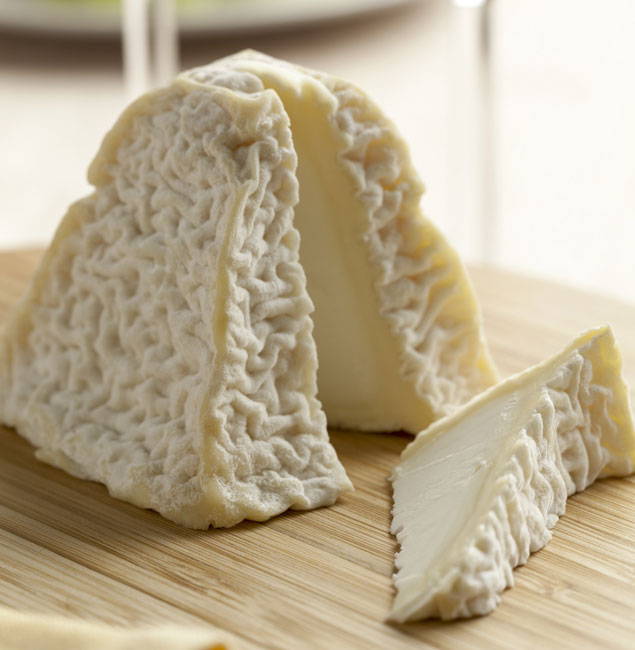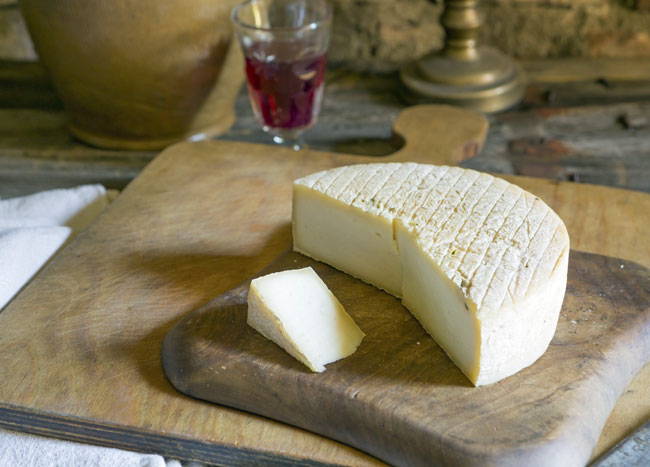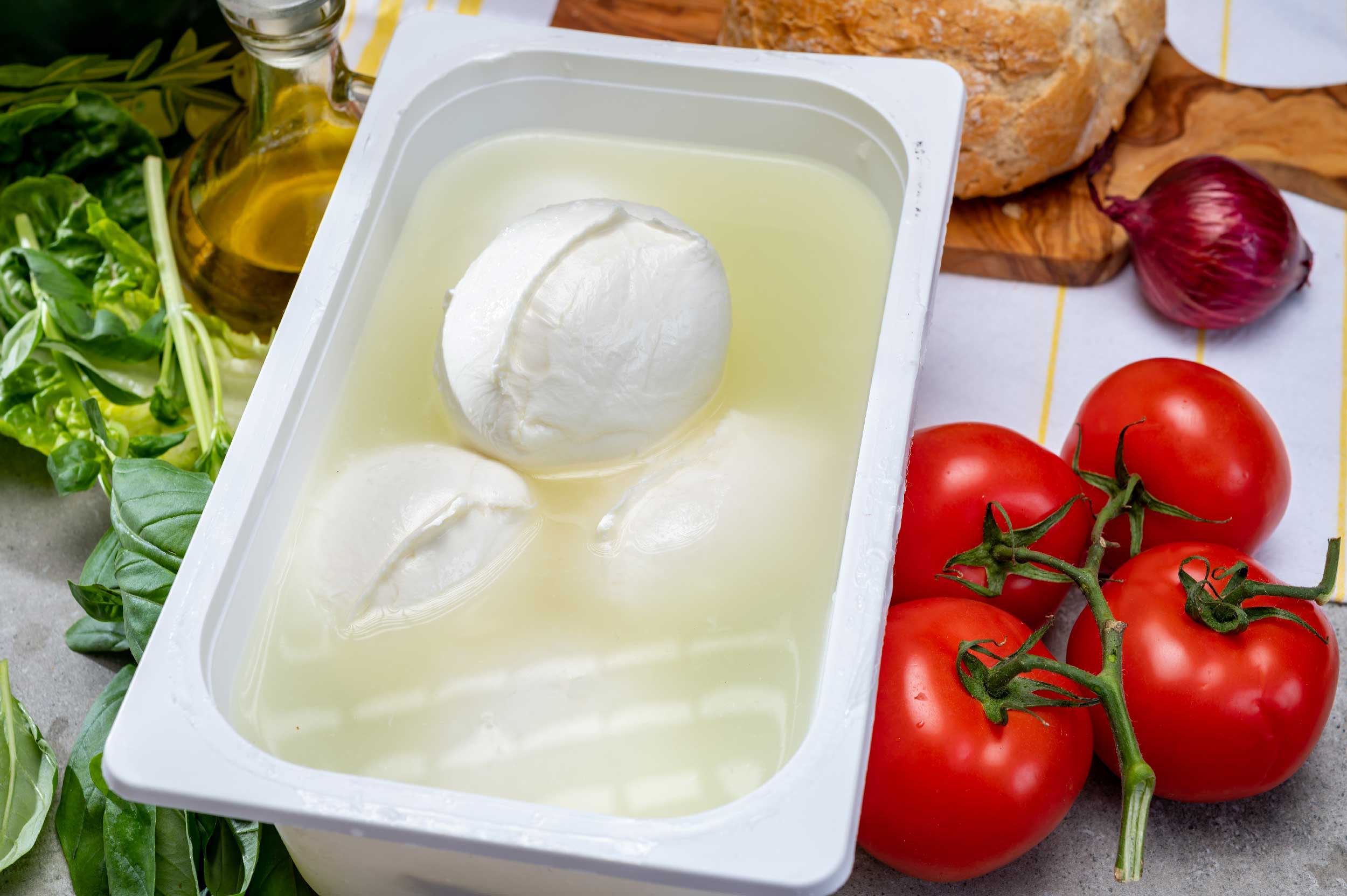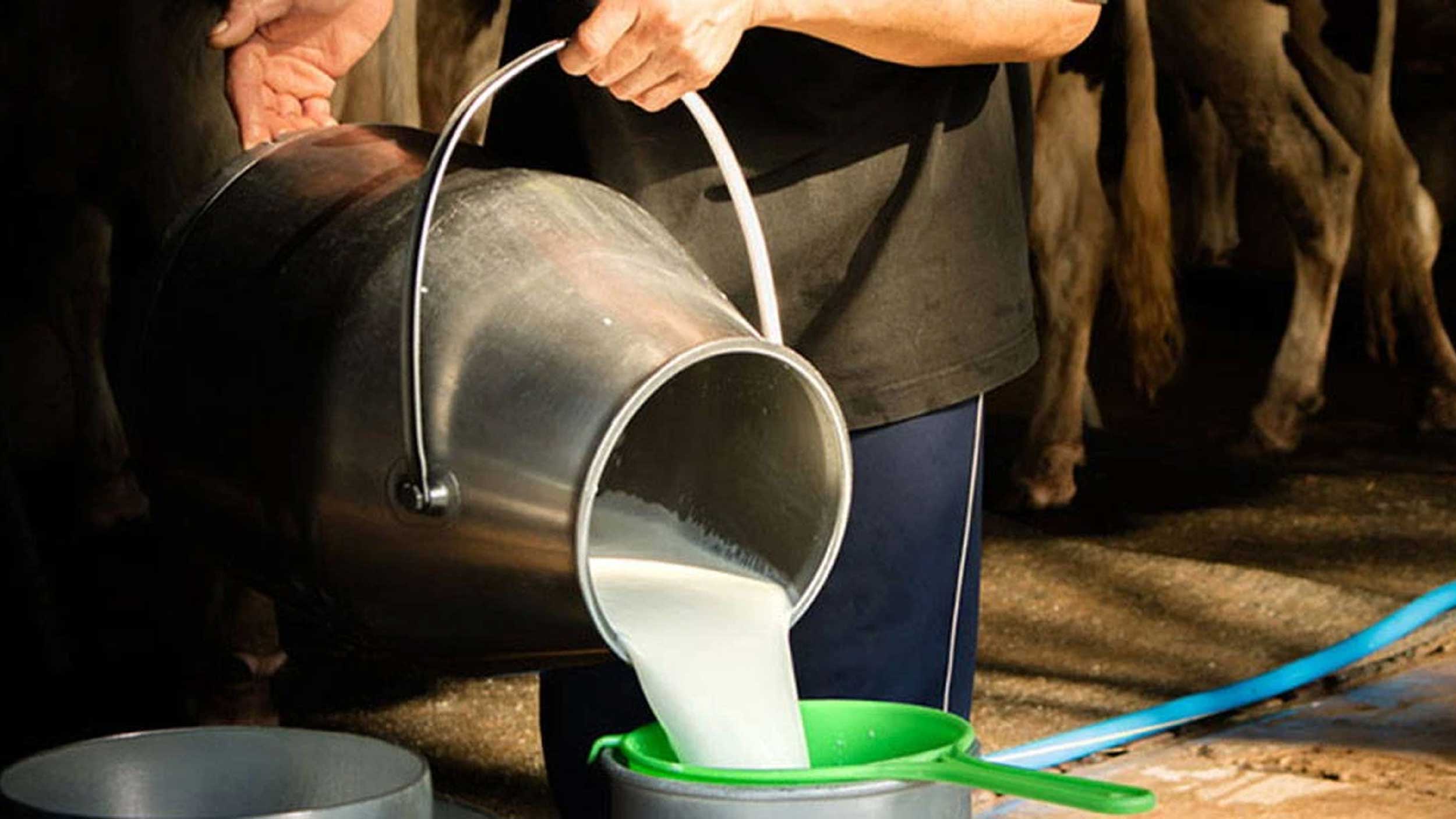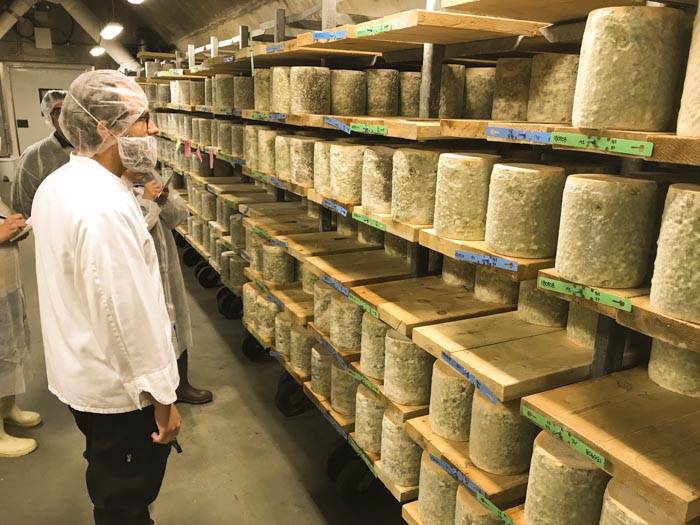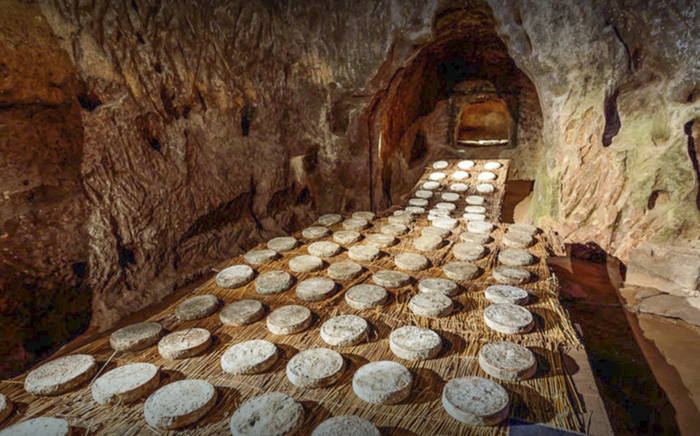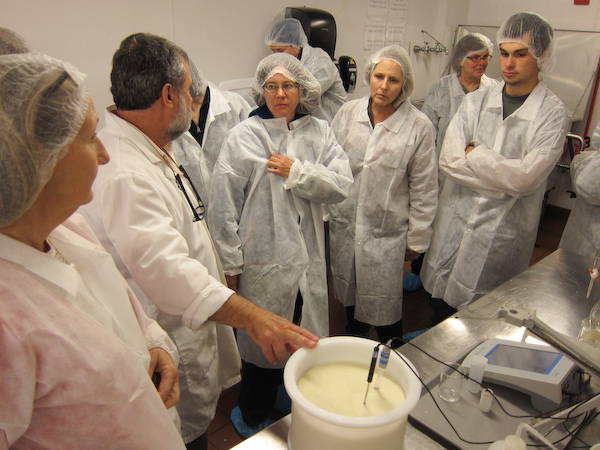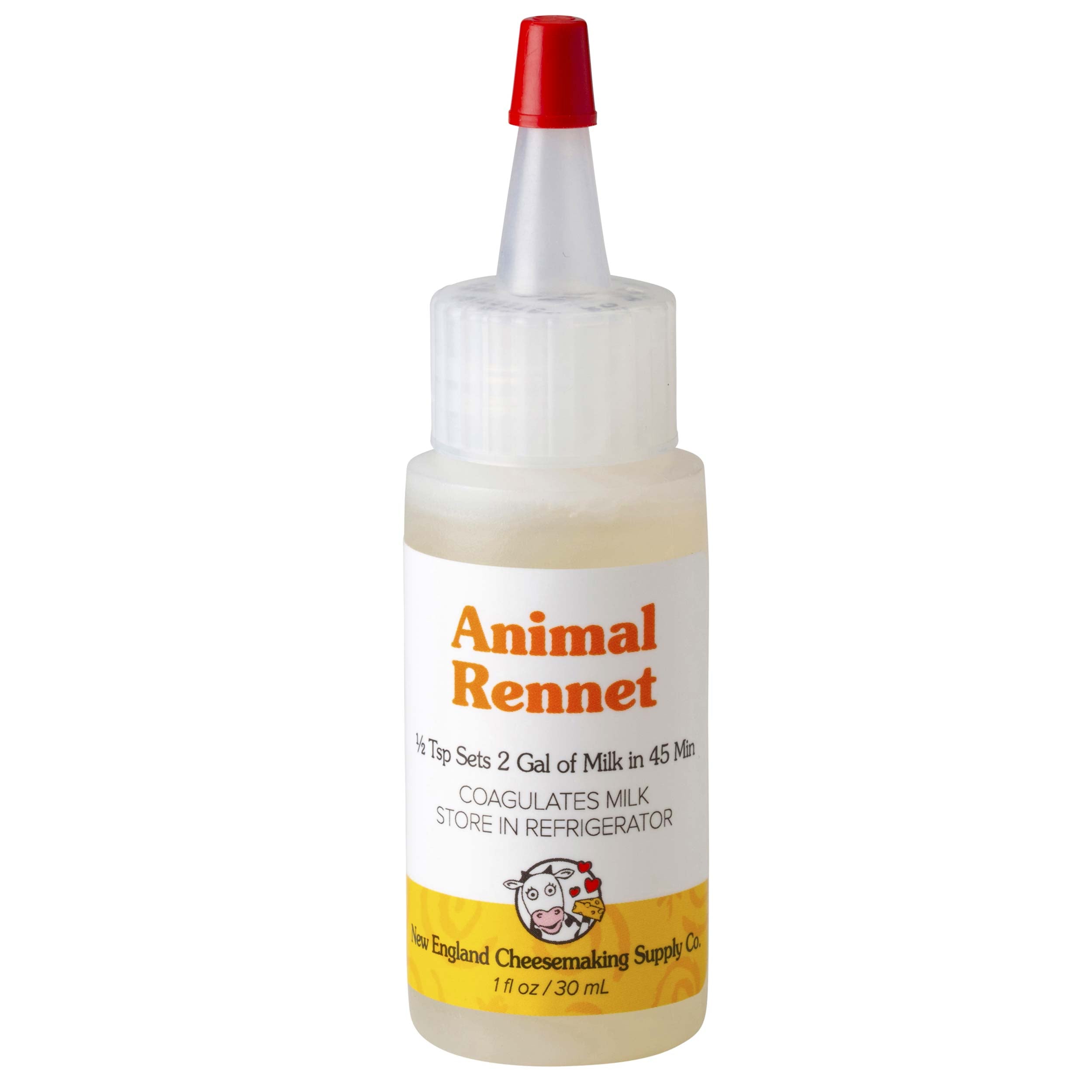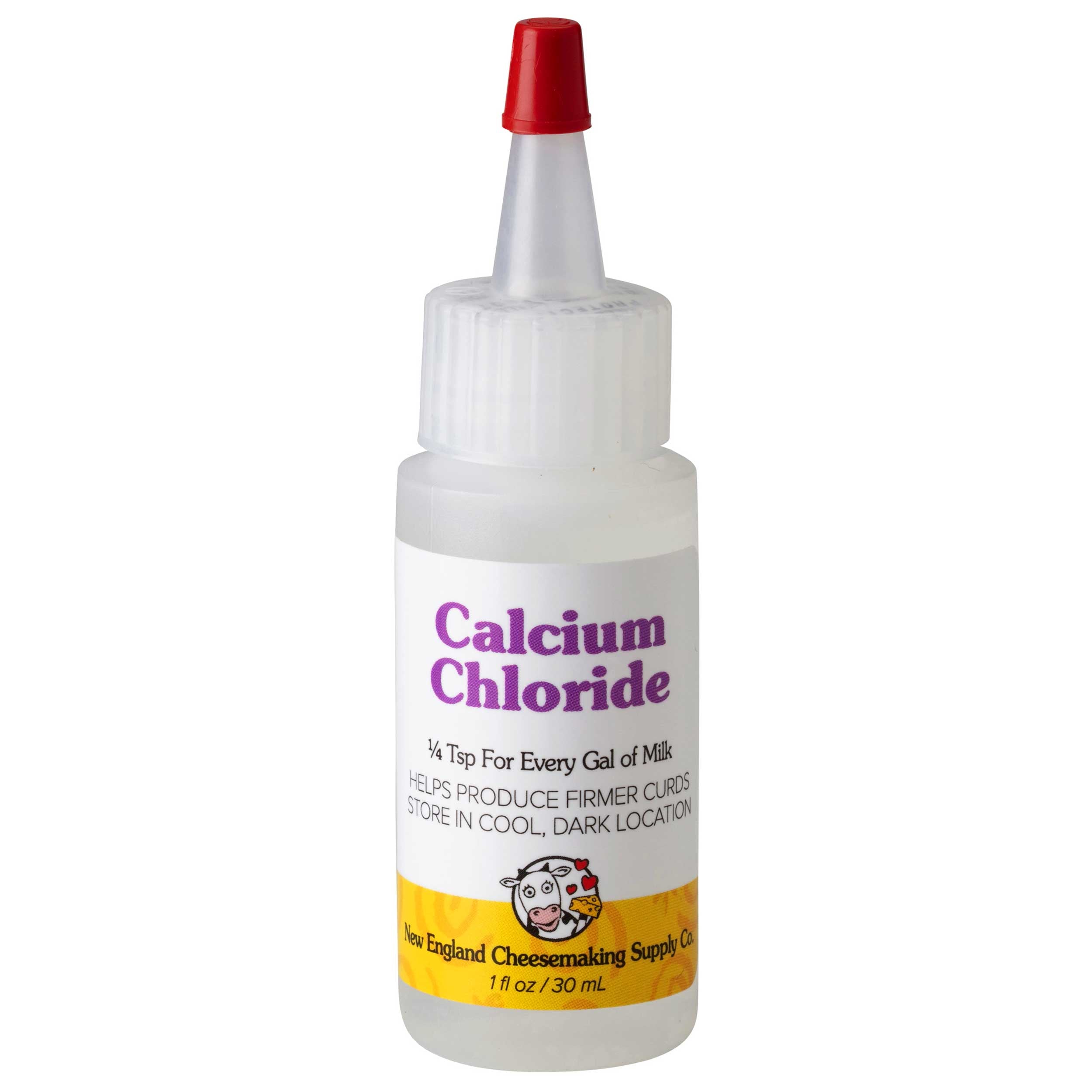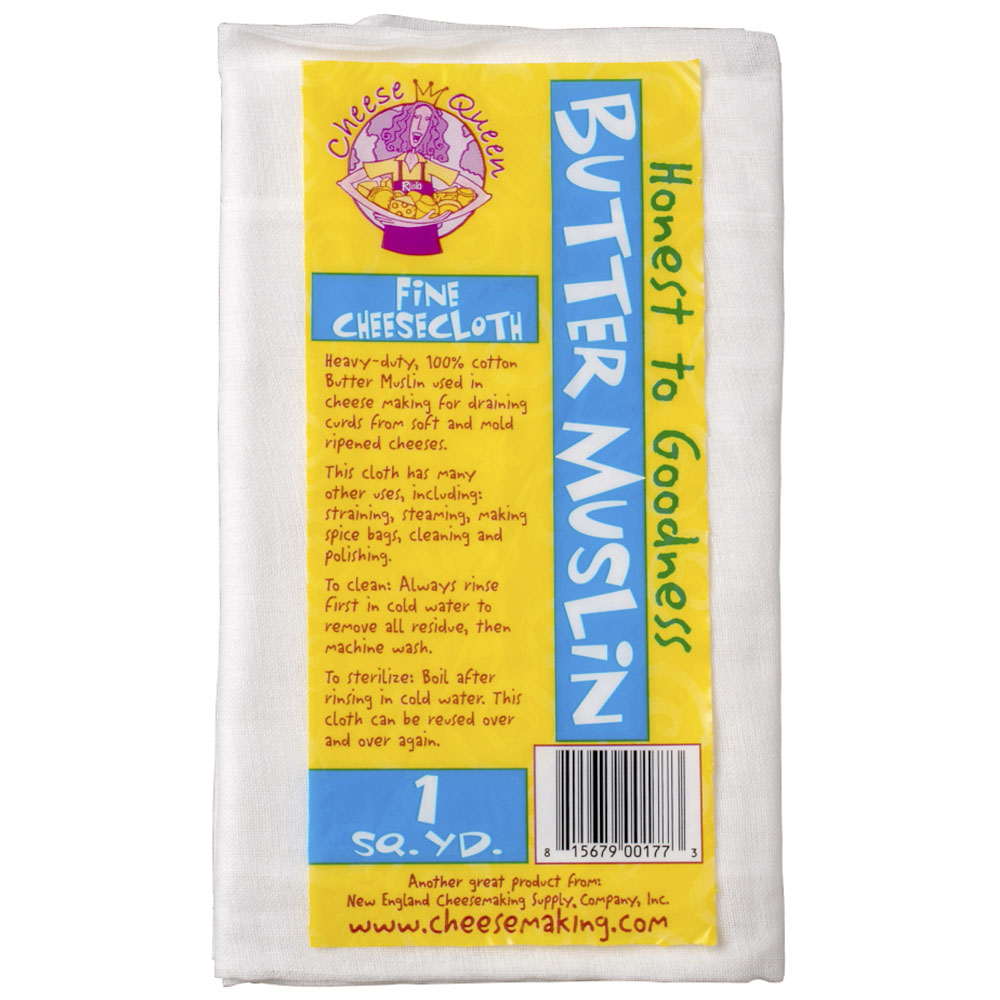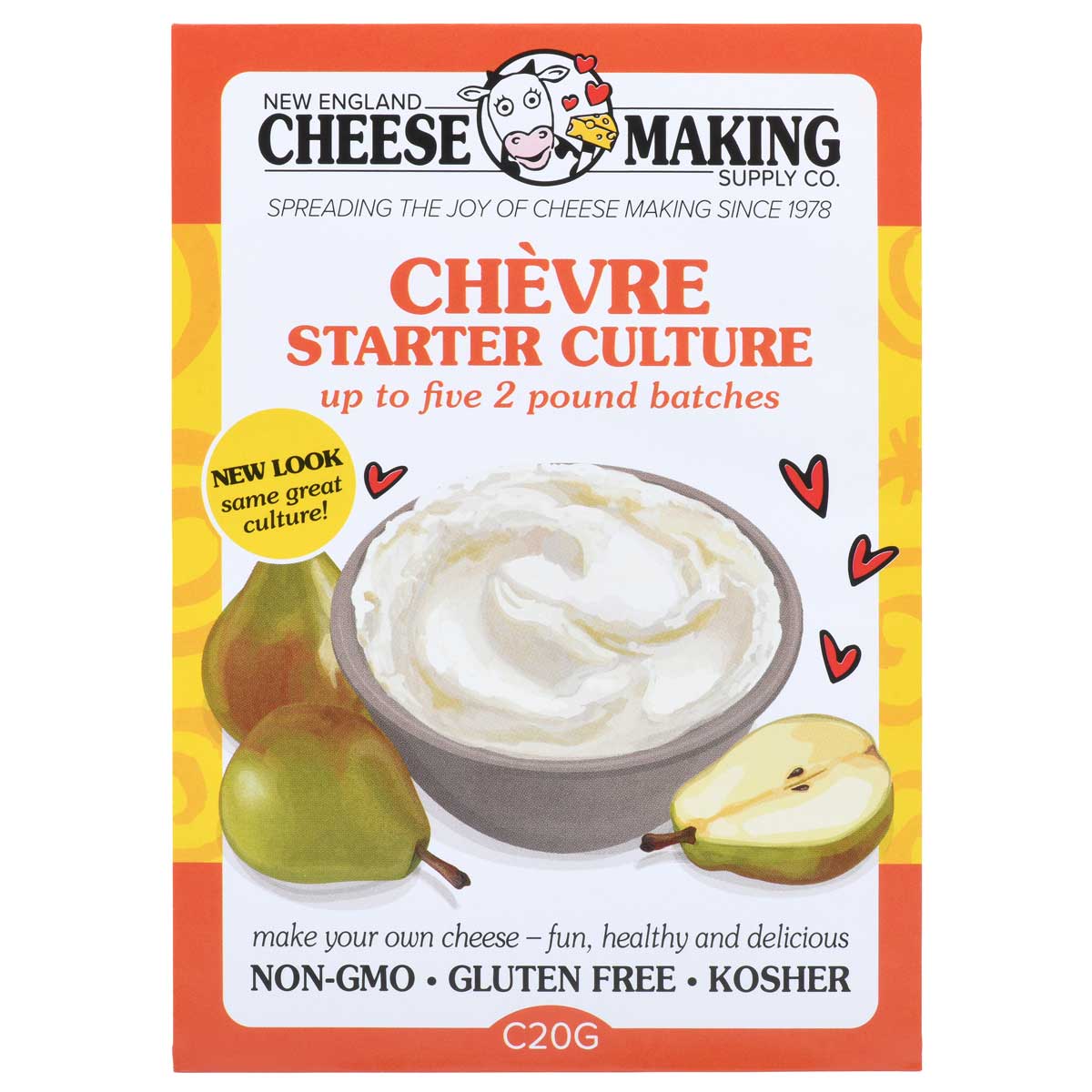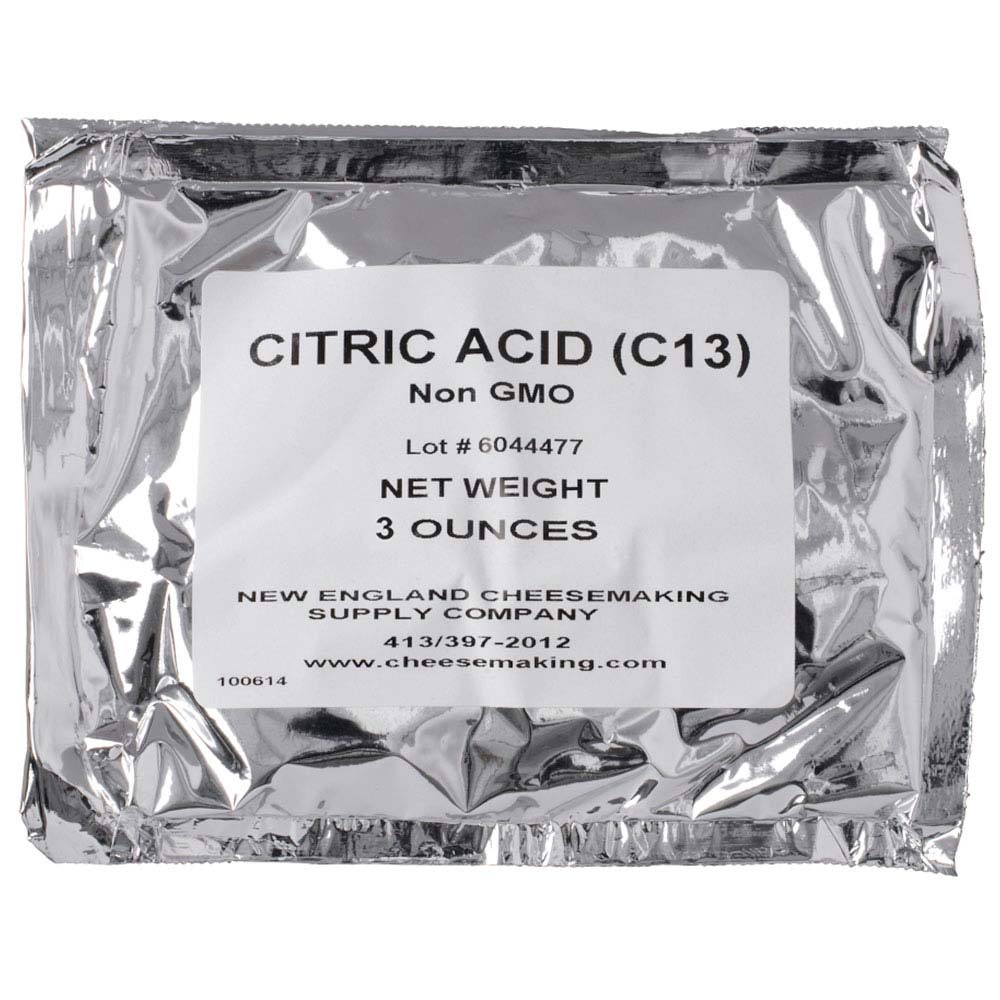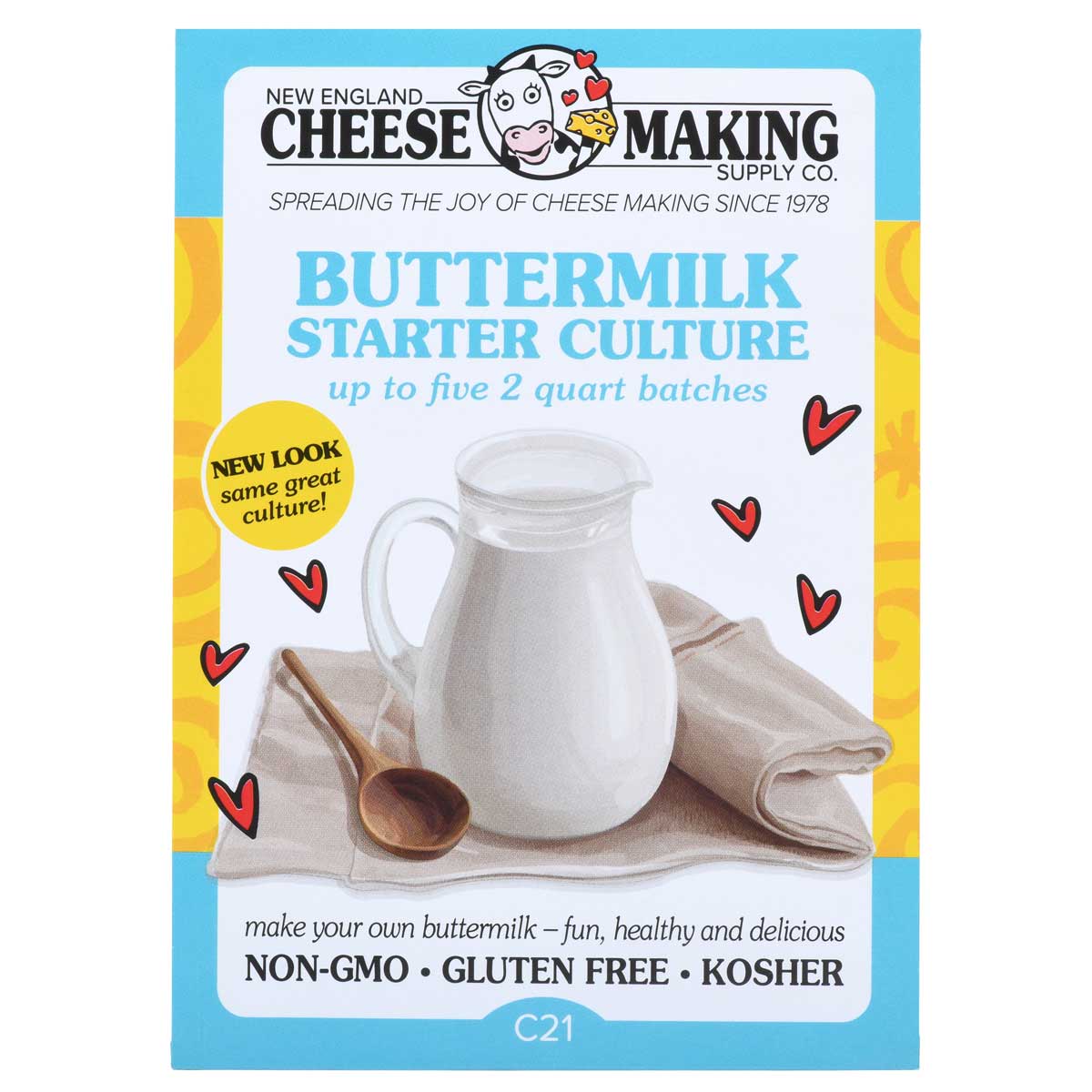Cheese Making Recipe of the Month
Fourme d' Ambert Recipe and History
When it comes to cheese, there's a reason why we say "Vive la France!"
Jim never misses an opportunity to go to Europe. He has traveled to the rugged Auvergne region of France, where this mild blue cheese originated. He saw exactly how it's made and he knows how it tastes when it's perfectly developed.
His detailed recipe is a unique opportunity for those of you who are advanced cheese makers to broaden your repertoire of French cheeses. Tres delicieux!
Cheese Making Questions & Answers
Cottage Cheese to Farmer's Cheese
Q. Yesterday I made cottage cheese, it came out wonderful. This morning it still tastes wonderful but is all matted together. I am wondering if this is due to the cream I added to make it creamier? I used the recipe in Home Cheese Making. Should I have let the curds dry and added the cream to only the portion I was going to eat
A. Stir Curds Longer - This is most likely due to curds that did not develop the right amount of acid and dryness before you added the cream for storage. This allows the curds to follow their tendency to consolidate into a large cheese mass (which was the traditional way they made farmer's cheese).
This can be improved in your next batch by stirring a bit longer before draining the whey. The advantages to this are:
- It gives the curds more time to release the whey and become drier.
- It allows more time for acid to develop and it encourages the whey to drain.
Also, once the curds are drained, they should be well stirred again. This will harden the outer surface and the curds will be less likely to knit together. Stir them well, yet again, after you add the cream, because the butterfat coating will make them less likely to mat.
Why do all my blues have an ammonia odor?
Q. Why do all my blues have an ammonia odor, and the longer they ripen, the grayer in color they become? My Shropshire Blue has a few interior cavities lined with brown mold and also has an overall ammonia odor and aftertaste.
A. The ammonia is due to the proteins breaking down excessively. Ammonia is one of the final breakdown products of proteins. The grey/brown is the dying back of the blue mold as it ages.
The interior cavities show for the same reason - the ammonia may be due to too much moisture or even from ripening too warm. It is a good idea to ripen blues at 52F and then drop to 42F when the blue begins to show internally.
Do I need to change the quantity for the water buffalo milk because the fat content is over 8%?
Q. I have been making cheese with cow's milk. I now have a connection through a friend to water buffalo milk. In making the 30 Minute Mozzarella, I have been using 1-1/4 tsp rennet to set the curd in a gallon of cow's milk. Do I need to change the quantity for the water buffalo milk because the fat content is over 8%?
A. Due to it's higher protein/ calcium balance and higher butterfat, you will need to experiment with this. The higher protein buffers the pH and keeps it from reaching the proper stretching point. So, we would recommend trying about 2x plus of the citric acid and half the rennet used in our normal recipe for cow's milk.
Try this:
- 1 gallon water buffalo milk
- 3 1/2 teaspoons citric acid
- 1/8 teaspoon liquid rennet
Have a cheese making question, we're here for you: info@cheesemaking.com
Meet a Fellow Cheese Maker
Alison Will in Cathlamet, WA
I'm Alison Will. I am 9 years old. I'm in 3rd grade. I'm continuing practicing, improving my cheese making skills so that when I have a grade A facility to produce it in, l can donate to the local food banks.
This will help my community because I live in a rural area where many people don't have a lot of money. Both the elderly and children will benefit from this cheese. It is healthy, nutritious and tasty.
Thanks for reading! I love cheese!
PS We have a small herd of brown swiss that my family likes to show. The calves are cute. I forgot to mention that I won first place and the judges' overall choice with my fresh cheese curds at the county fair's cheese contest.
This spotlight section is a whey to honor cheese makers. Please share your stories and help spread the love of cheese making - moosletter@cheesemaking.com
News From Fellow Cheese Makers
Update from Okinawa
Things are going very well at the cheese factory. We have put in a second cheese vat, so we can now process 150 litres of milk (40 gallons) - before it was just 50 (13 gallons).
Demand continues to increase. Our sales have been on a steady rise for the last year with no advertising whatsoever - only word of mouth. Well, the local TV did do a mini-documentary on us. It's mostly in Japanese, but I think you will get the idea - click here
Since then we've had another TV channel and a local magazine asking to do features on us, but I've been holding them at bay, because the impact would be more than we could handle at present.
Okinawan culture does not include cheese and, sadly, the cheese that most Okinawans know is the kind of processed cheese that looks and tastes like soap and that wouldn't melt if you put a blow torch to it. So, it is largely a process of education. We have to introduce Okinawans to cheese. For this reason, we are at the local farmers' market (see link to documentary above). They try it, most like it, some buy and many come back every week.
Many of our cheeses feature local ingredients that are unknown even in other parts of Japan.
I will do a write up on this in the near future, with pics. Now, I have to get back to cheese making.
John Davis, The Cheese Guy in Okinawa, Japan
Wedding "Cake"
Thought you might be interested in this wedding cake my wife (Lynda) made for our daughter. It is not a cheesecake, but a cheese cake.
The bottom layer was cheddar and chives, 2nd layer is gouda, 3rd layer is colby and the top was a Brin d'Amour. All told, there was approximately 40 lbs of cheese.
The little mice (fittingly for a cheese cake) were made by our daughter, the bride. For party favours, my wife made 100 little cheese wheels, about 2" around. She put a layer of wax on each wheel, then we put a label with the picture of the little mice and the names of the couple as well as the date, and waxed over the label. They were placed on small disks of birch log, sanded and finished with oil and wax.
Claude Garneau, Ottowa, Canada
Chocolate-Chili Provolone
I've come up with a recipe - what I call Chocolate-Chili Provolone, using Jim's beer brine recipe. I just remove the beer brine and use cayenne, bakers chocolate, and salt instead. People love it.
I start off with the provolone recipe from your site. Then I use the beer infused brine - but instead of beer, I use 1/4 cup baker's chocolate, 1/3 cup salt, and 1 tablespoon cayenne pepper. I use hot filtered water to mix the brine.
I put my curds in the brine after draining the whey. I cut them into 1/2" cubes in the brine. Then I put them in the oven for 1 hour at 170F.
I then press the cheese with a ten pound rock in my homemade press for 12 hours. After pressing, I let dry at room temp for 23.5 hours wrapped in a paper towel.
And there you have it. This is a provolone, high in moisture with a marbled curd. This cheese is a bit spicy on the after taste. Enjoy.
Tim Bisson, Siletz, OR
Hands Around the World
Ricki has always had a wonderful knack for making things fun, no matter what the situation. With much love, she now has a personal favor to ask her extended family of home cheese makers:
20 years ago I had a small area of breast cancer which has now returned. It is also small, but cancer nevertheless. So, I am asking friends, neighbors and extended family to create with me a hands-on quilt so I can wrap myself in your 'ever lovin' arms.' Whatever does not fit into the quilt will be made into a loving book of 'hands-on reading.'
If you're interested, below are the details, and if you're attending the American Cheese Society Convention in Rhode Island, I'll see you there after my surgery. Thank you for your continued love and support.
- A. Trace your hands on something well worn
- B. Cut them out
- C. Sew them onto another piece of well worn material (no particular size or shape)
- D. Write your name and maybe a little note
- E. Send in your loving hands so I can add them to my quilt
Send in by the end of July, if possible - Ricki Carroll, 54 Whately Rd., South Deerfield, MA 01373. Please do not try to make your piece 'perfect,' I'm an imperfect kind of girl. Perfection for me is in the process, love and soul of the work. The important thing is not how straight we can get the lines, it is the connection made from you're unique creation which I will cherish every day.
Many, many thanks for your participation.
XOXOXOXO
In Peace, gratitude and JOY!
Ricki
Please send your cheese making news & photos to: moosletter@cheesemaking.com
Cheese Making 1,2 & 3
Learn all about the ingredients, equipment and process for making cheese at home. This beginner's guide will walk you through the process from start to finish.
Beginner FAQ's
Got a question? We've got an answer. From milk and cream to rennet and aging, our FAQ section is filled with answers to all your home cheese making questions.































